- Visualizza Nuovi Contenuti
- Nikonland
- Sezioni
- Test
- Guide agli acquisti
- Indice Articoli
- Blog
- Forum
-
Fotografie
- Novità dalle Gallerie Fotografiche di Nikonland
- Una foto soltanto : Consigli & Critiche
- Ultime Immagini Caricate
- Ultimi Commenti
- _____________________________
- Contest e occasioni speciali di Nikonland
- Natura
- Fiori
- Ritratto
- Nudo
- Street
- Motori (auto e moto)
- Paesaggi e Panorami
- Architetture
- Viaggi e reportage di viaggio
- Sport (no motori)
- Vendo e Compro
- Downloads
-
Altro

Benvenuti su Nikonland Questo sito è indipendente, è autofinanziato, non promuove e non raccoglie pubblicità. Non è collegato con Nikon, Nital o le loro sussidiarie
Nikonland non è una rivista periodica e non è quindi sottoposta alla normativa vigente
Ultimi Test
-
 Panasonic Lumix DC- GH5: changing photography
Panasonic Lumix DC- GH5: changing photographyMax Aquila - gen 04 2018 17:26
-
 Sony Vario Sonnar 2,8/24-70 ZA SSM II: lo Zeiss...
Sony Vario Sonnar 2,8/24-70 ZA SSM II: lo Zeiss...Max Aquila - ago 08 2017 10:39
-
 Nikon 24-70mm F2.8E VR (test/prova)
Nikon 24-70mm F2.8E VR (test/prova)Lieve - ago 02 2017 16:25
-
 Nikon D7500 o Nikon D500 : quale scegliere ? (g...
Nikon D7500 o Nikon D500 : quale scegliere ? (g...Lieve - ago 01 2017 12:38
-
 Nikon D7500 : io non ho paura ! (test/prova)
Nikon D7500 : io non ho paura ! (test/prova)Lieve - ago 01 2017 13:59
Altri Contributi
-
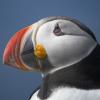 [libro Nikonland centenario] Il Terzo Occhio
[libro Nikonland centenario] Il Terzo OcchioAlberto Coppola - ago 17 2017 15:43
-
 [reportage] Non è più strano... il Tai Chi Chuan nei Parchi a Milano.
[reportage] Non è più strano... il Tai Chi Chuan nei Parchi a Milano.Silvio Renesto - ago 05 2017 13:16
-
 100 anni di Nikon il mito intramontabile
100 anni di Nikon il mito intramontabileRoby C - ago 04 2017 14:49
-
 01-09-2017 - Pravo dopo quarant'anni cambia sede
01-09-2017 - Pravo dopo quarant'anni cambia sedeRoby C - ago 02 2017 17:08
-
 31 luglio 1954... e uno che diverrà un famoso nikonista...
31 luglio 1954... e uno che diverrà un famoso nikonista...Roby C - lug 31 2017 18:48
-
 la Vera Storia della Riunione del 29 Luglio...
la Vera Storia della Riunione del 29 Luglio...Roby C - lug 30 2017 22:46
-
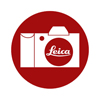 Sardegna - Sud Est
Sardegna - Sud Estcris7 - lug 24 2017 19:27
-
 Avignone - Il festival off
Avignone - Il festival offMassimo Vignoli - lug 18 2017 21:59
-
 [editoriale] Garanzia cinqueminuti...
[editoriale] Garanzia cinqueminuti...Max Aquila - lug 12 2017 12:21
-
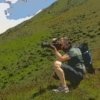 [motori] Monza Historic
[motori] Monza HistoricGiannantonio - lug 06 2017 13:39
-
 [libro Nikonland centenario] だいすきニコン (daisuki Nikon)
[libro Nikonland centenario] だいすきニコン (daisuki Nikon)Alberto73 - lug 04 2017 21:52
-
 [manifestazioni] TRATTA 29 giugno 2017
[manifestazioni] TRATTA 29 giugno 2017tommowok - giu 30 2017 13:23
-
 [luoghi] i laghi del Trentino
[luoghi] i laghi del TrentinoAlberto73 - giu 29 2017 21:13
-
 [reportage] Tre Torri
[reportage] Tre TorriGiannantonio - giu 28 2017 15:46
-
 [Nikonland libro Centenario] come da tag
[Nikonland libro Centenario] come da tagValerio Brùstia - giu 26 2017 00:06
In evidenza
-
 Le Nikon del 2017
Le Nikon del 2017Lieve - feb 08 2017 08:36
-
 16 ottobre - 2006-2016 : dieci anni della nostr...
16 ottobre - 2006-2016 : dieci anni della nostr...Lieve - ott 16 2016 06:03
-
 La Stampa in Bianco e Nero
La Stampa in Bianco e NeroSpinoza - mag 19 2016 19:55
-
 Nikon D5 : semper fidelis (test/prova)
Nikon D5 : semper fidelis (test/prova)Lieve - ott 30 2016 17:17
-
 La nascita di Nikon (Nippon Kogaku) e la Marina...
La nascita di Nikon (Nippon Kogaku) e la Marina...Lieve - mar 04 2015 11:11
-
 Nikon D810 : la terra promessa (test/prova)
Nikon D810 : la terra promessa (test/prova)Lieve - mar 10 2015 13:50
-
 Il fascino intramontabile delle foto stampate
Il fascino intramontabile delle foto stampateLieve - mag 22 2014 09:23
-
 Calibrare e Profilare il monitor. Guida pratica
Calibrare e Profilare il monitor. Guida praticaSpinoza - mag 13 2014 12:57
Ultime News
-
 25 luglio 2017 : fine della ricreazione
25 luglio 2017 : fine della ricreazioneLieve - lug 28 2017 11:02
-
 La Nikon D850 ha un mirino ibrido ?
La Nikon D850 ha un mirino ibrido ?Lieve - lug 27 2017 05:40
-
 Importante aggiornamento firmware per la Nikon...
Importante aggiornamento firmware per la Nikon...Lieve - lug 12 2017 07:50
-
 Nuovo Nikon AF-P 70-300mm F4.5-5.6E VR (FX)
Nuovo Nikon AF-P 70-300mm F4.5-5.6E VR (FX)Lieve - lug 11 2017 07:28
-
 New Old Camera : servizio 'demo' e Meet...
New Old Camera : servizio 'demo' e Meet...Lieve - giu 12 2017 07:41
-
 Nuovo Nikon 10-20mm F4.5-5.6 VR
Nuovo Nikon 10-20mm F4.5-5.6 VRLieve - lug 07 2017 16:49
-
 Nuovo Nikon 8-15mm F3.5-4.5E Fisheye
Nuovo Nikon 8-15mm F3.5-4.5E FisheyeLieve - mag 31 2017 07:23
-
 Nuovo Nikon 28mm F1.4E
Nuovo Nikon 28mm F1.4ELieve - mag 31 2017 07:36
-
 Fotografia, messaggi, il tempo in cui viviamo.
Fotografia, messaggi, il tempo in cui viviamo.Lieve - giu 25 2017 05:35
-
 Il dado è tratto. Sarà il 2018 l'anno mirro...
Il dado è tratto. Sarà il 2018 l'anno mirro...Lieve - lug 12 2017 07:15
Sigma Sd Quattro, applications for Palaeontology
ott 09 2016 11:20 |
Silvio Renesto
in International
Sigma Sd Quattro macrophotography fossil photography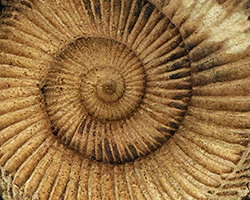
Sigma Sd Quattro and Ultraviolet light. A chapter apart.
Often in palaeontological research may be useful to lighten specimens with UV light (in a dark room where light can be turned off). In some cases the fossils reflects UV light differently from rock matrix, allowing to see much more details than under visible light. It is not a rule, it depends from the characteristics of the fossils and of the rocks, in some case there may be no differences. Better results are achieved if the fossil is made of phosphate (e.g. bones)
Anyway, the easiest and more economical method is to lighten the fossil with an UV A lamp, usually of 380 nm wavelength, and take photos with a DSRL and a macro lens . With reflected UV light there is no need of special equipment, given that the sensor and lens do not block UV light too much. I, along with colleagues, tried this technique with different DSRLs and got different results. And with the Sigma Sd Quattro? Let me say: mamma mia!
To make things even worse for the camera we choose the fossil of an animal without hard parts (usually bones and teeth reflect UV very much), an octopus.
Octopuses are very rare in the fossil record just because they lack shells or other hard parts, thus they are preserved only in very few deposits where conservation is exceptionally good. So their evolutionary history is rather obscure.
In short, we take this octopus specimen (the stone slab is about 40cm high) and photographed it under visible light:
Very interesting, good detail, scientifically significant, but not that easy to interpret.
Now the photos with the Sigma under UV light:
Simply stunning. I never saw such details so clearly (you can see gills, suckers, eye caps, ink sac and even the remains of vestigial shells that primitive octopuses retained).
This level of detail obtained without using expensive equipment like a 100mm f4 macro Coastal Optics, that costs like a small car (at least in Italy). This is in my opinion the strength of the Sigma Sd Quattro.
In short, this camera made me enthusiastic (too much, now I want one) and I think it is an excellent tool for my work, because it yields professional images at a fraction of the price of equipments that can surely yield similar or even better results, but are, as said, much more expensive and much less agile to carry around.
Thus the Sigma Sd Quattro, coupled with a 105 macro Sigma, may be the dream kit for me, when I need to take pro-quality pictures of specimens held in other institutions.
All the fossils shown in this article are held in museums, which Curators I warmly thanks for the kind hospitality.
I wish to sincerely thank Mauro Maratta for allowing me to try the camera, it has been a great fun. Only regret, I have to return it.

I wish to thank also The Italian dealer of Sigma, MTrading,that offered to Nikonland the chance to know in depth this unusual but very special camera.
[page 1][page 2][page 3][page 4]
Test:
Yes
0 user(s) are online (in the past 15 minutes)
0 utenti, 0 ospiti, 0 utenti anonimi


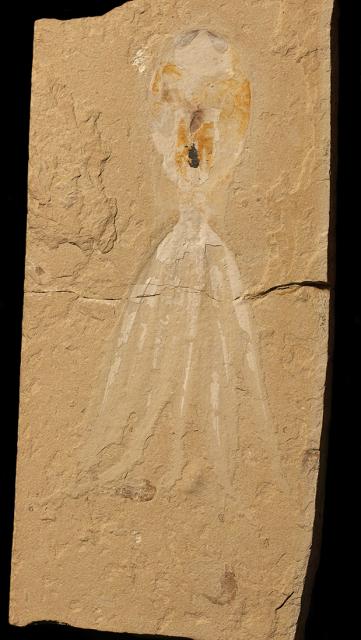
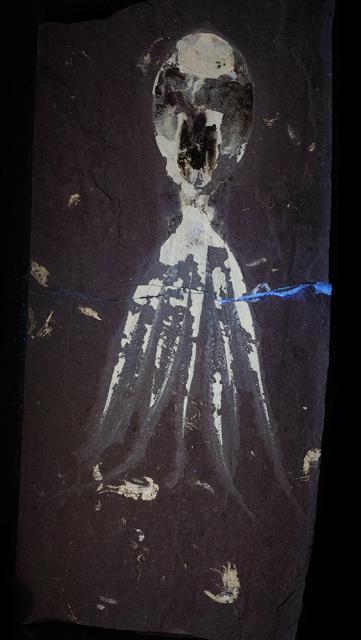











0 Comments